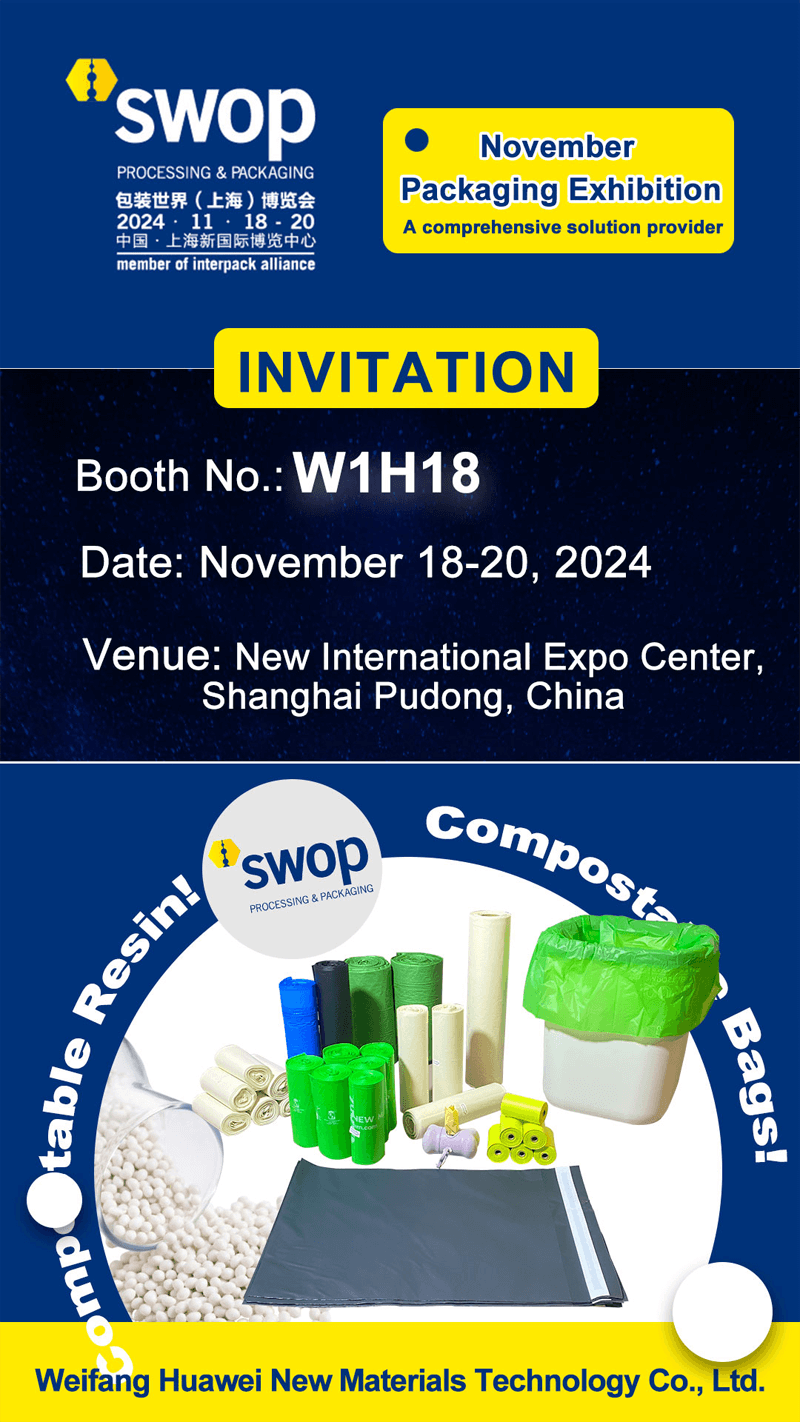Mar. 21, 2024
Due to the white pollution of the environment caused by traditional plastic bags is becoming more and more serious, as people's environmental awareness continues to improve, biodegradable plastic bags, fully biodegradable plastic bags, fully biodegradable plastic bags a variety of new degradable materials plastic bags one after another, biobased plastics and biodegradable plastics are environmentally friendly, sustainable alternatives to the traditional plastics that are currently mainly based on petroleum-based raw materials of new materials. "Degradable", "biodegradable" and "compostable" and so on is often involved when people talk about these materials, terminology, it is easy to get confused, they are similar to each other and there is a difference, so what is the difference between them? What is the difference between them?

Degradable plastic bags include those that can be degraded by physical and biological factors (light or heat, or microbial action). So-called aerobically degradable (i.e., degradation accelerated by catalysts or activators at high temperatures) or photodegradable starch-polyethylene plastics pose a number of environmental problems. These degradable plastic bag materials do not degrade as quickly as compostable plastics and may leave behind debris. The water-repellent debris formed by these degradations has a large surface area and may migrate to groundwater and soil, where it adsorbs and retains some water-repellent, highly toxic substances, such as PCBs and DDT, on its surface, resulting in toxicity levels of up to 1 million times the background level, which is sufficient to act as a delivery system for toxic substances in the environment. Therefore, it is important to ensure that the product is fully biodegradable within a very short period of time as determined by the treatment facility.
Biodegradable plastic bags are those that can be fully digested by the microorganisms in the treatment system as food for energy (entering the food chain). This complete microbial digestion/utilization is determined by testing whether the carbon element of the test plastic can be completely converted to CO2 by microbial processes occurring in the cells.

In addition to being biodegradable by microorganisms, there is a time requirement that must be met in order for a plastic bag to be called a "compostable" plastic. For example, the standards ASTM 6400 (Specification for Compostable Plastics), ASTM D6868 (Specification for Biodegradable Plastics for Surface Coating of Paper or Other Compostable Media), or EN 13432 (Compostable Packaging) state that these materials should biodegrade in industrial composting environments in less than 180 days. An industrial composting environment means that the specified temperature is approximately 60°C and microorganisms must be present. According to this definition, compostable plastics do not leave fragments in the residue that are present for longer than about 12 weeks, do not contain heavy metals or toxic substances and can sustain plant life.

What is compostable is necessarily biodegradable, and what is biodegradable is not necessarily compostable, because "compostable" has specific environmental criteria and time scales. Although the terms "biodegradable" and "compostable" are nearly synonymous, they are fundamentally different. Technically, everything that is compostable is biodegradable, but not everything that is biodegradable is compostable, as the latter has specific third-party criteria and time requirements.
Related Products
Latest News
The “Degradable Plastic Bags” You Throw Away Are Secretly Polluting Our Homes
Degradable Bags Become Organic Fertilizer After Use Safety and Environmental Protection
The Situation Of Plastic Waste In 2025
The total consumption and per capita consumption of plastic
Celebrating the Chinese New Year-Rejecting Excessive Packaging And Plastic Waste
What Is The Difference Between Biodegradable Bags And Fully Biodegradable Plastic Bags?
The origin of plastic can be traced back to the mid-19th century.
How Biodegradable Plastic Bags Decompose Without Releasing Toxins
How Bio Plastic Bags Support Sustainable Product Manufacturing
Do Bio Plastic Bags Release Harmful Substances During Decomposition?
Does Biodegradable Plastic Bags Have an Impact on Environmental Protection
The Difference Between Fully Degradable Plastic Bags And Pseudo Degradable Plastic bags
The Difference Between Fully Degradable Plastic Bags And Pseudo Degradable Plastic bags
The Difference Between Biodegradable Mailer Bags And Traditional Mailer Bags
How Long Does It Take For Wet Garbage And Different Plastic Bags To Degrade?
Current Status and Future Development Trends of Biodegradable Plastic Bag Market in 2024
Traditional Plastic Bags Have Gradually Been Replaced By Biodegradable Plastic Bags
In 2024, Protect Our Planet And Make The New Year More Meaningful
How to Create the Perfect Packaging Field?
From November 22 to November 24, 2023, we participated in Shanghai World Of Packing.
